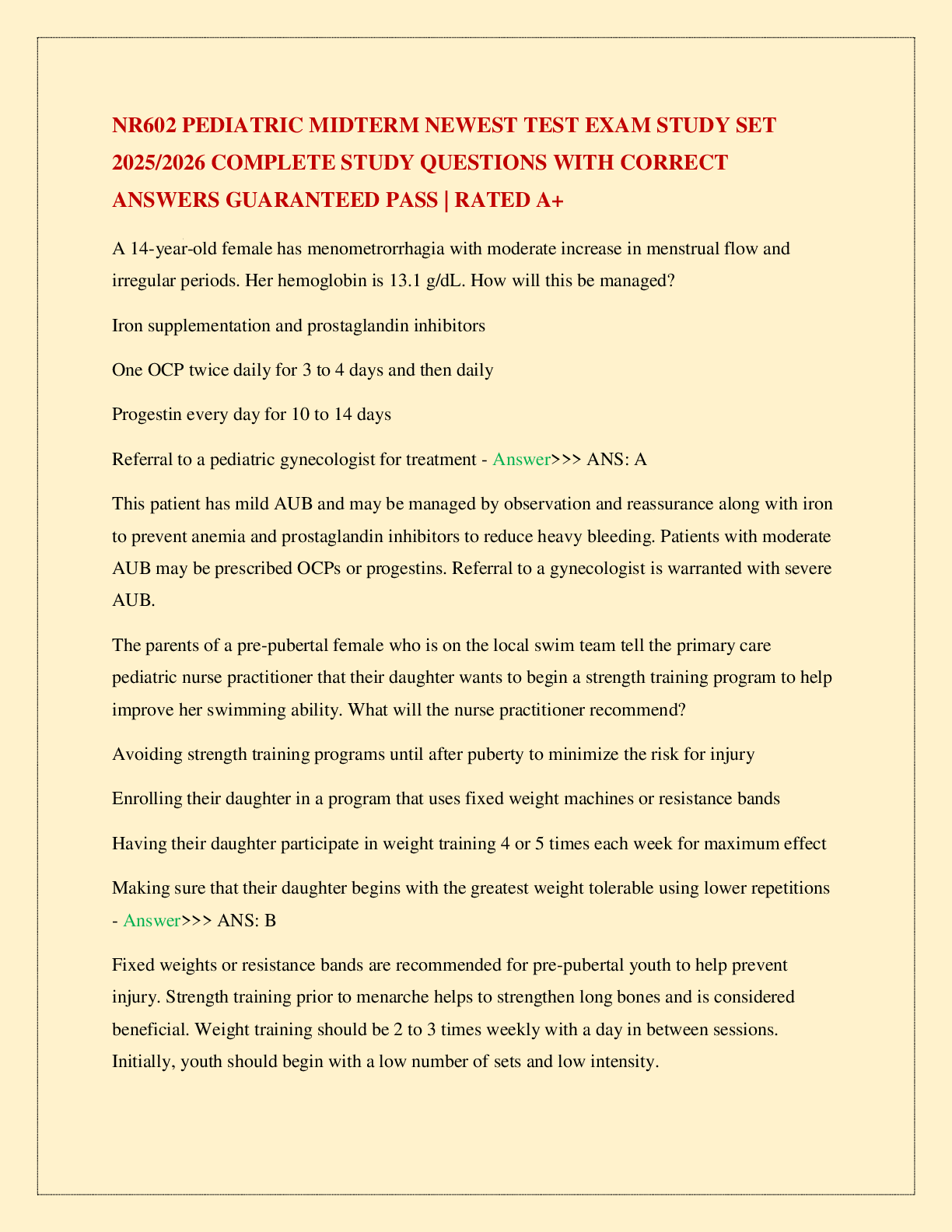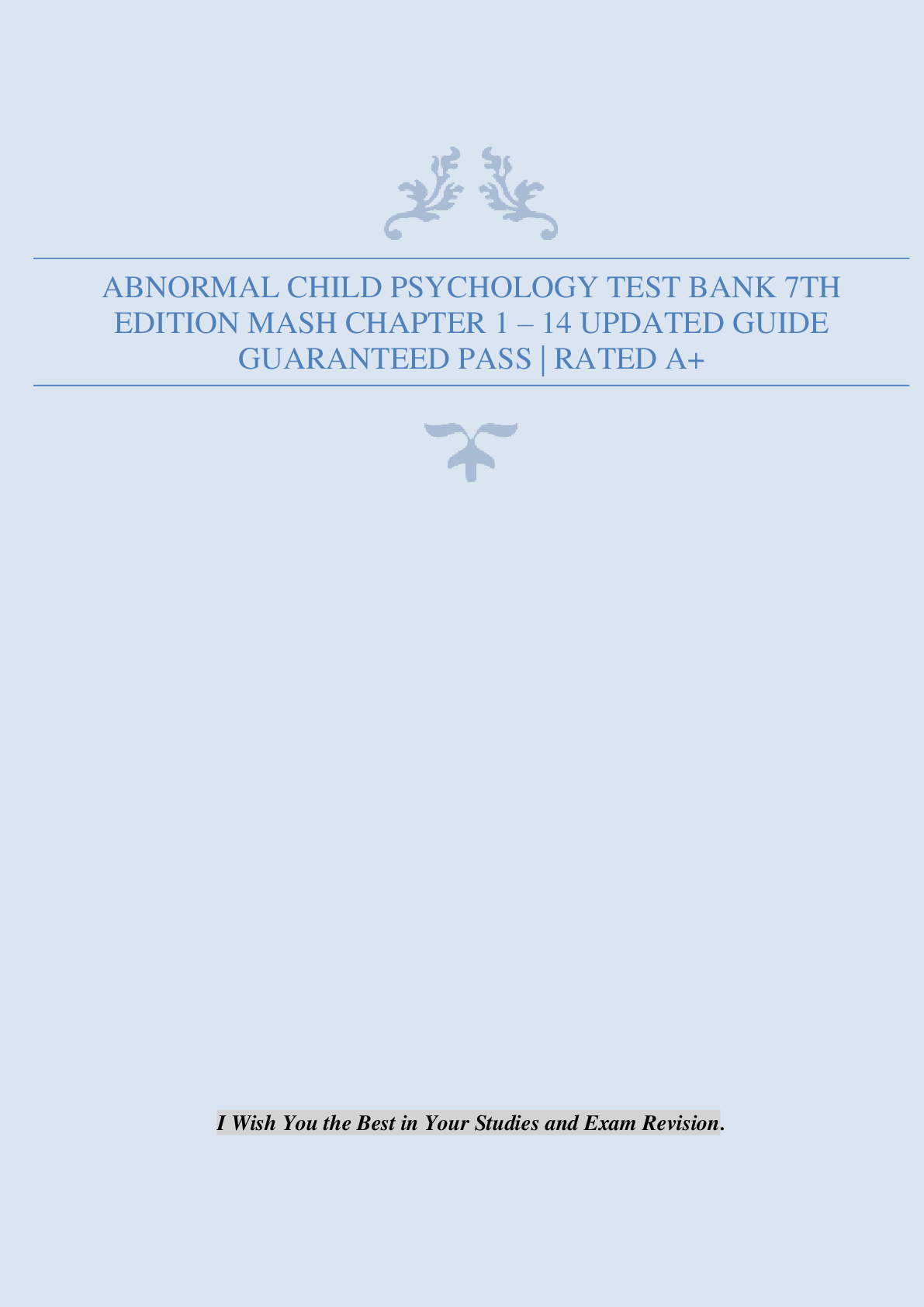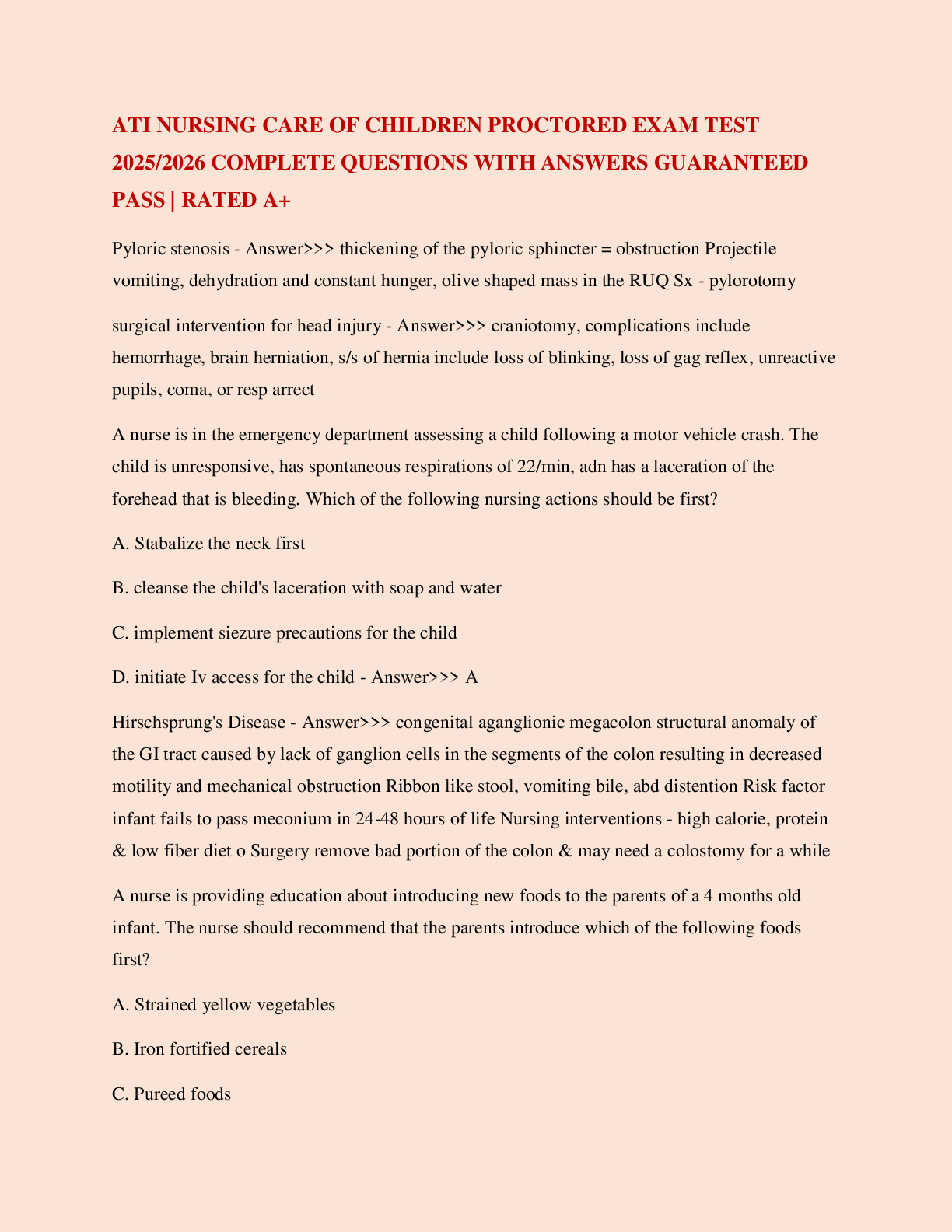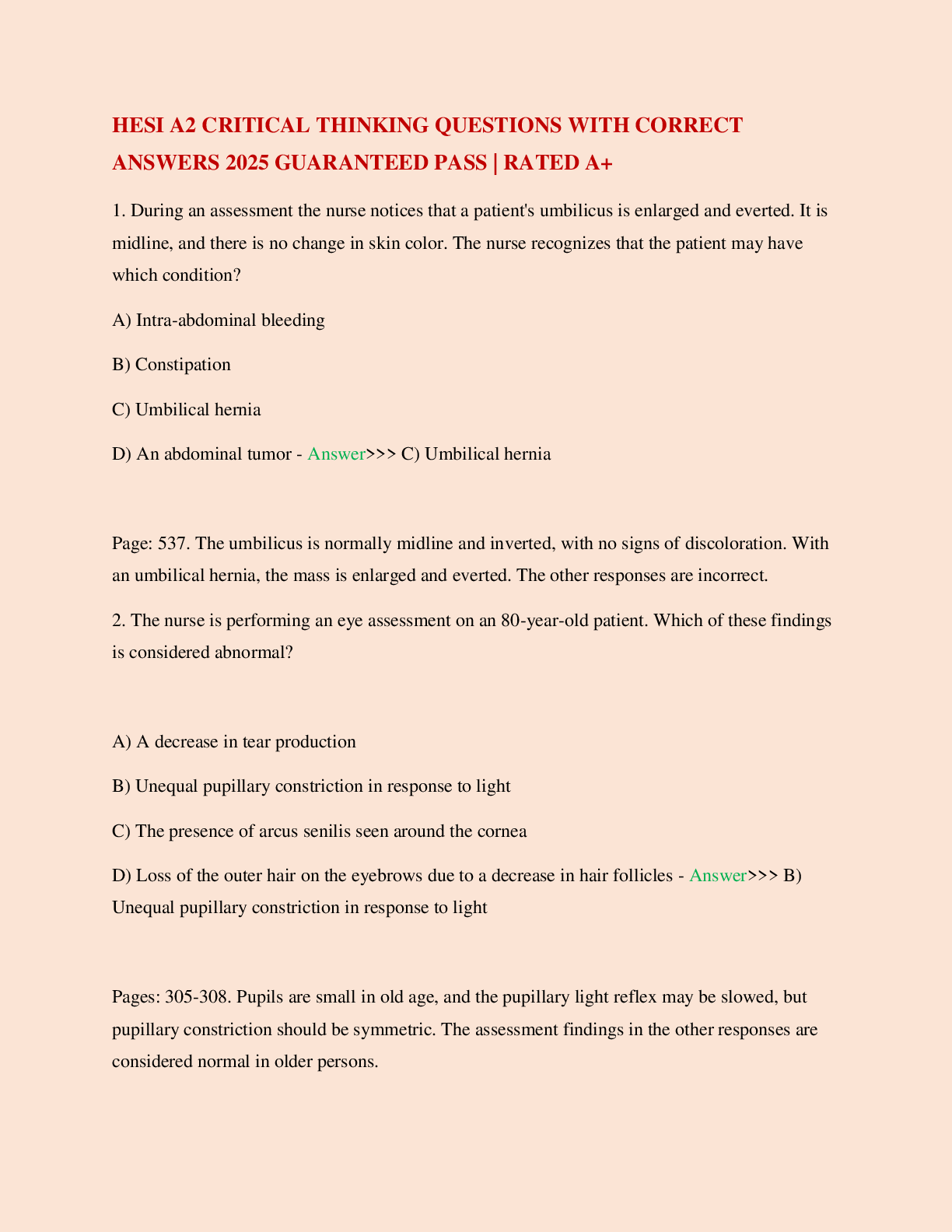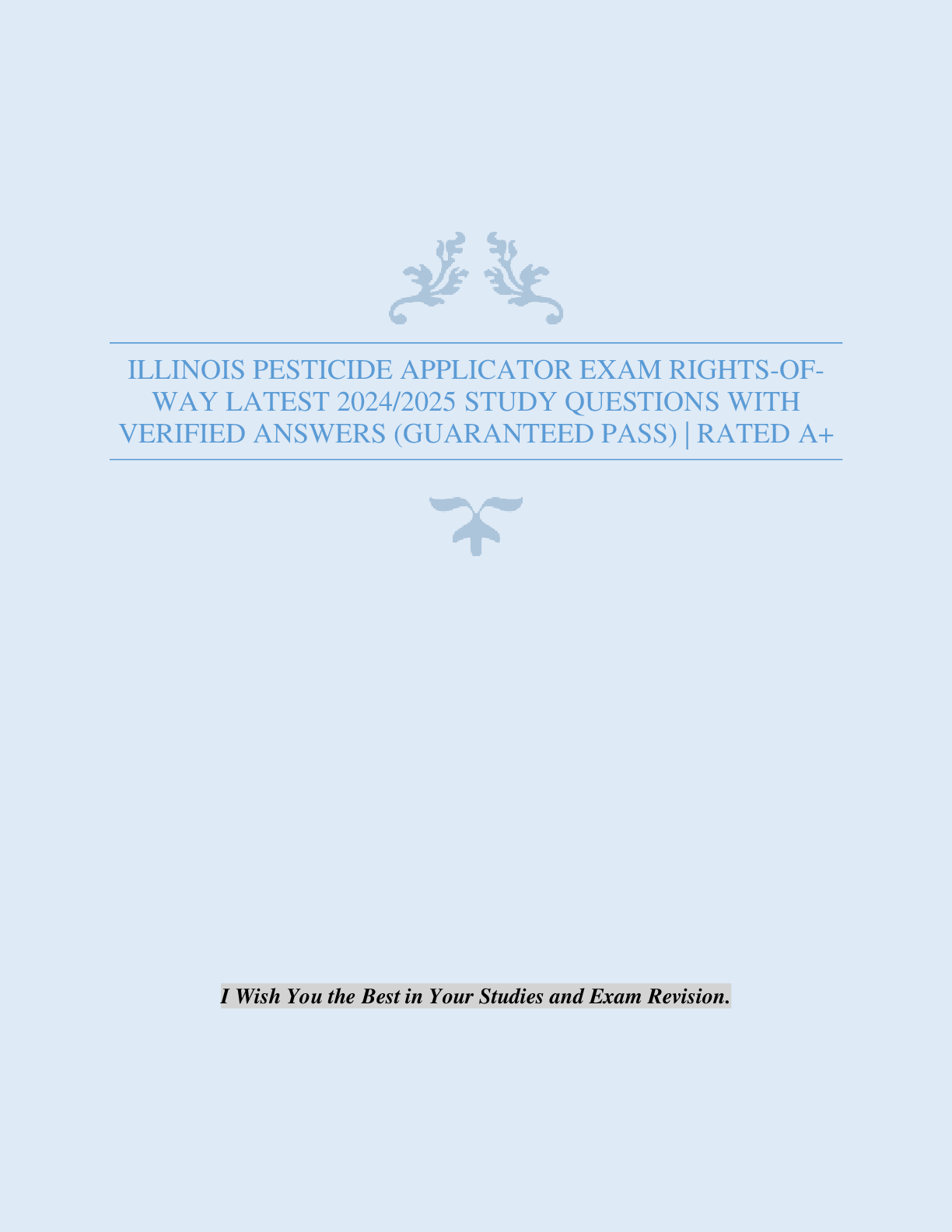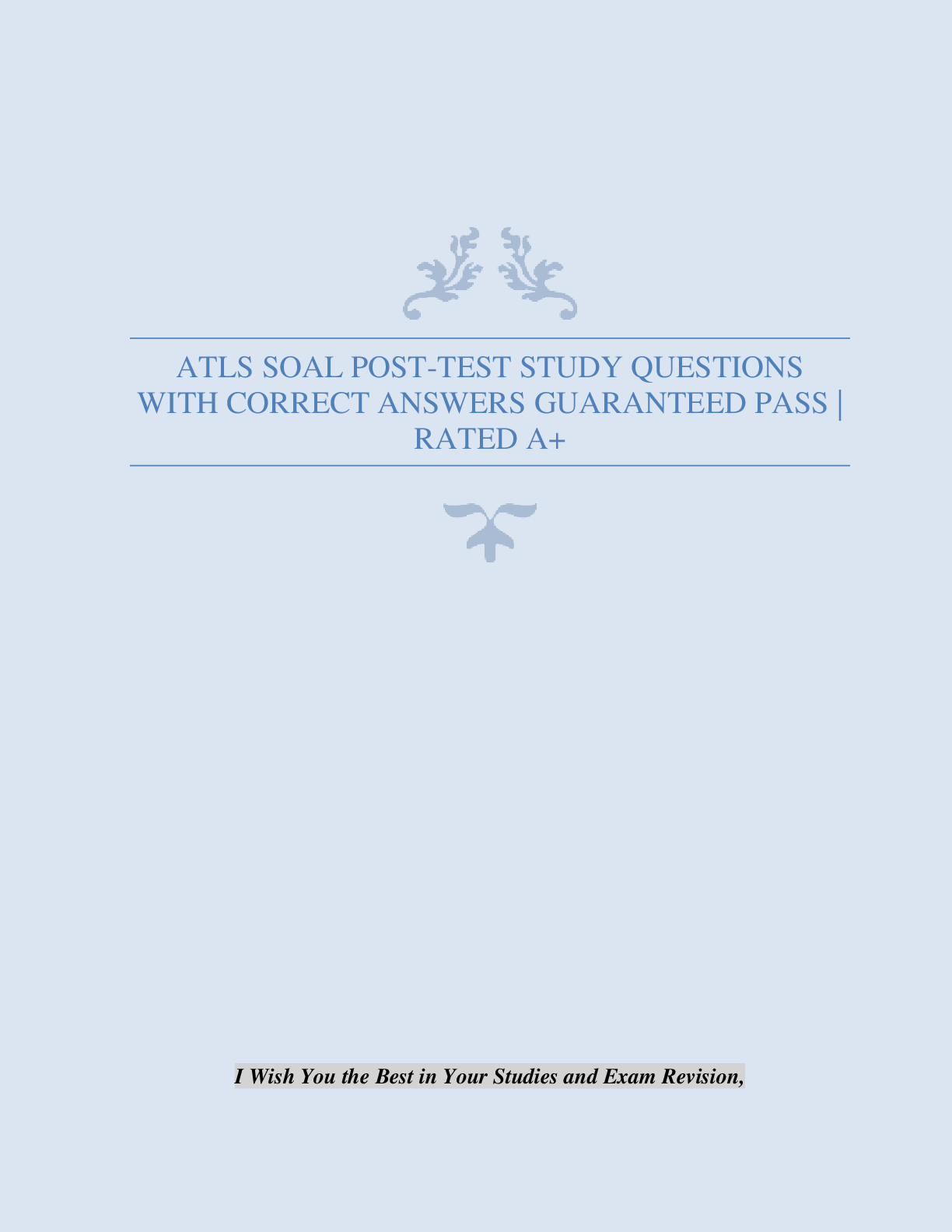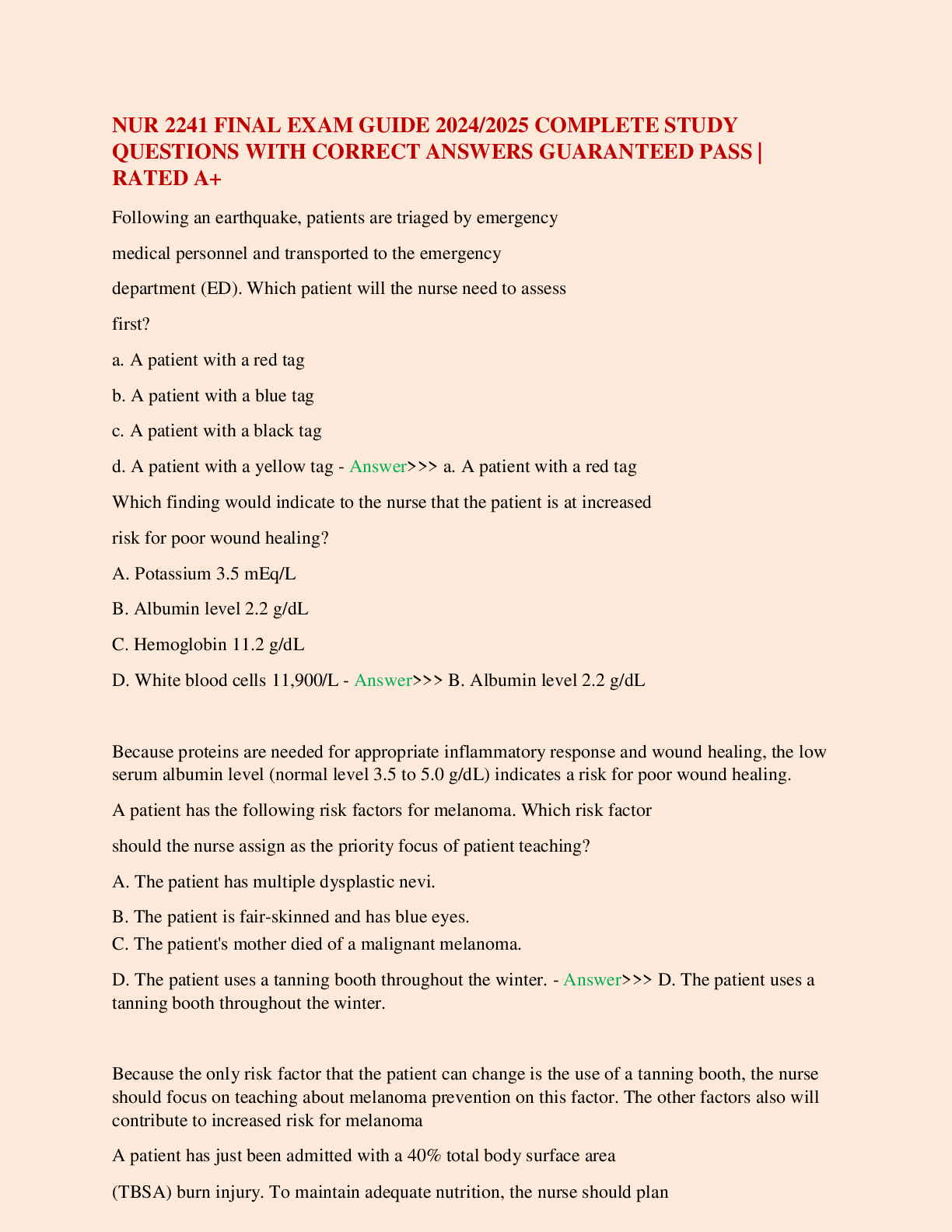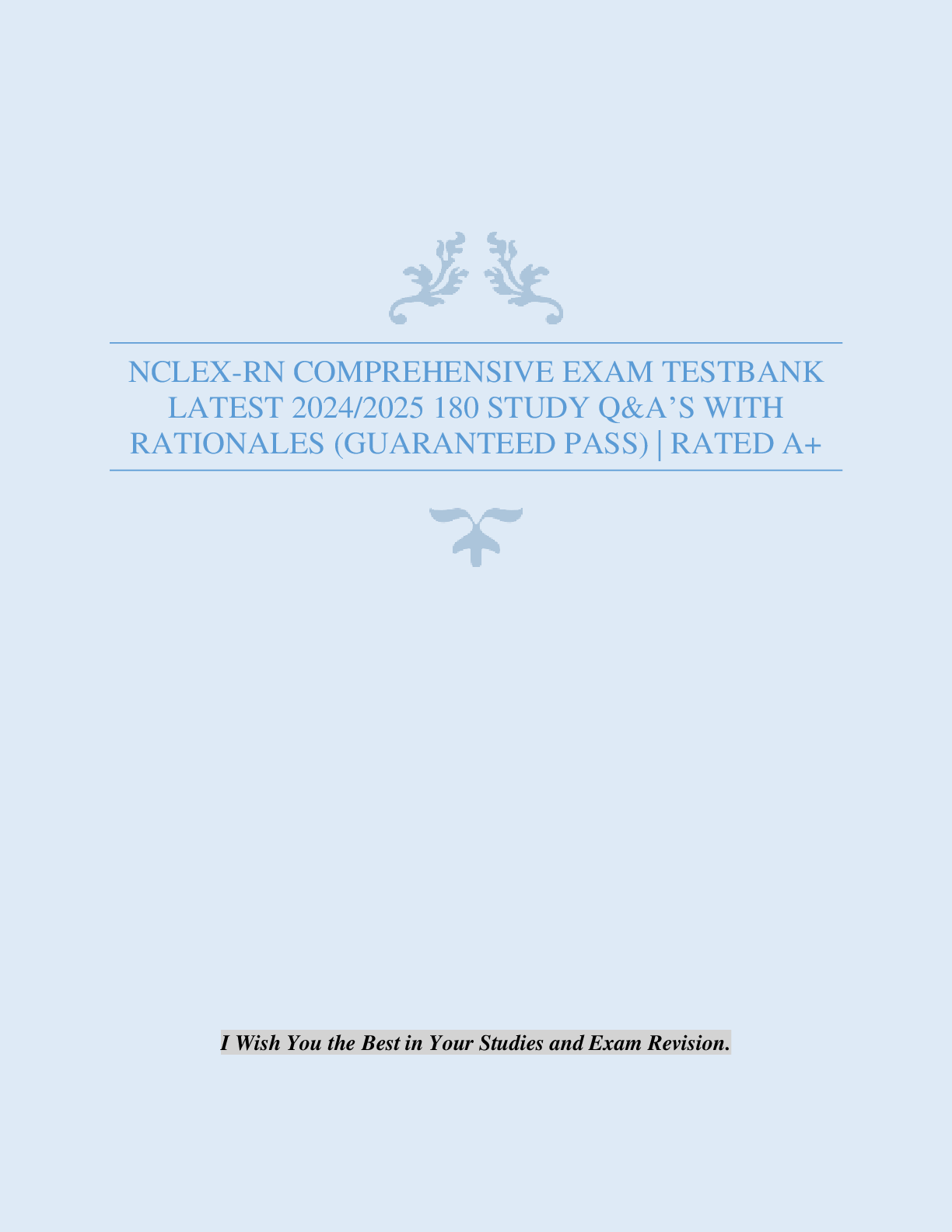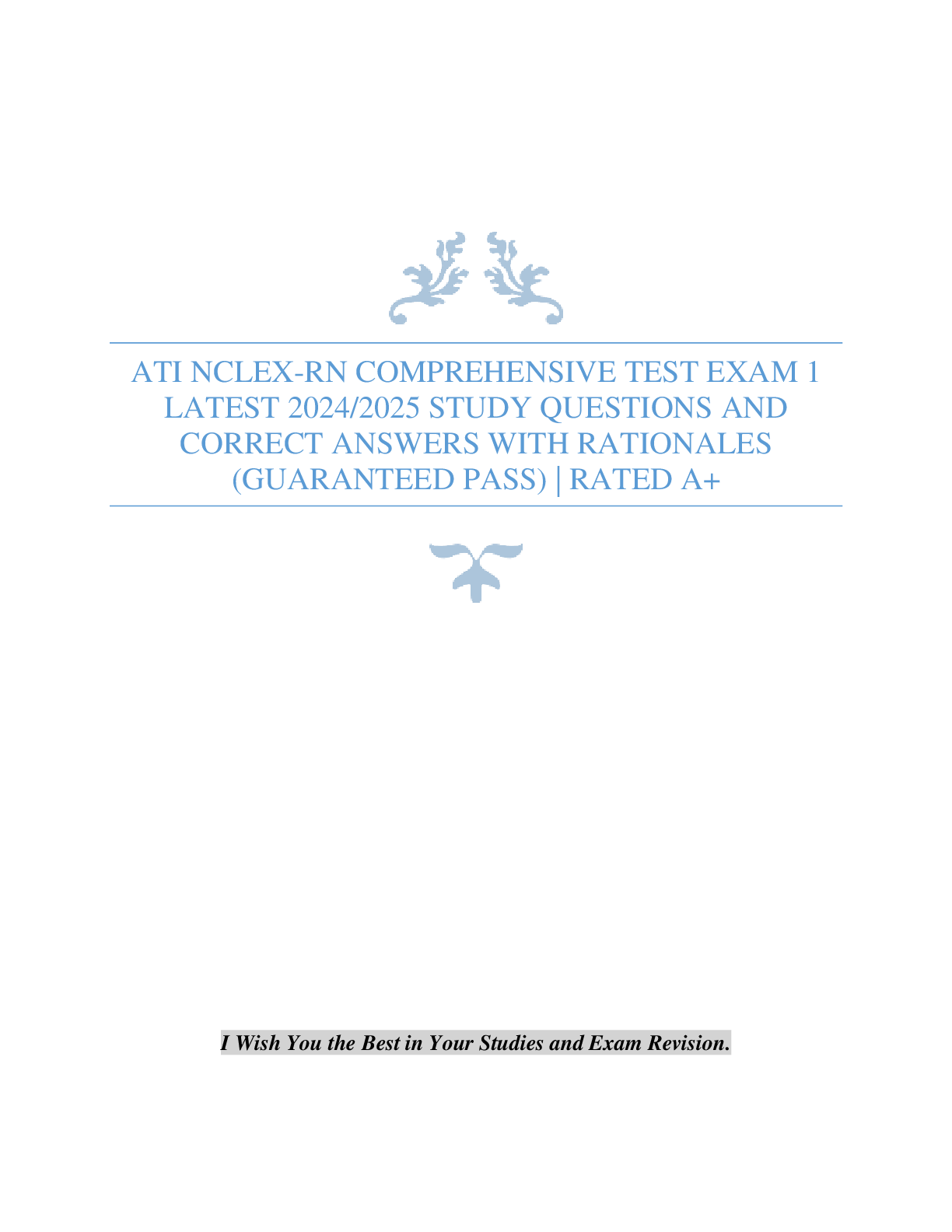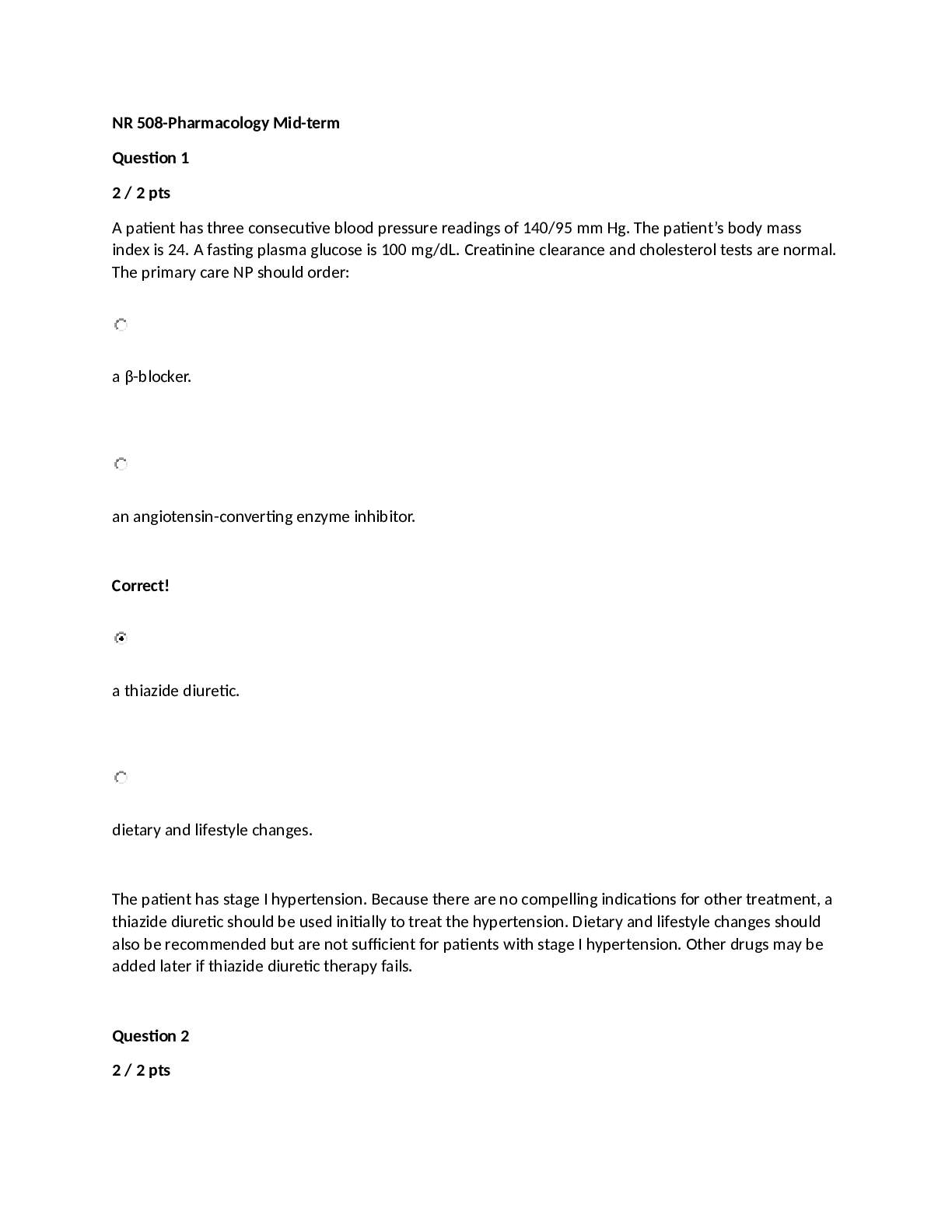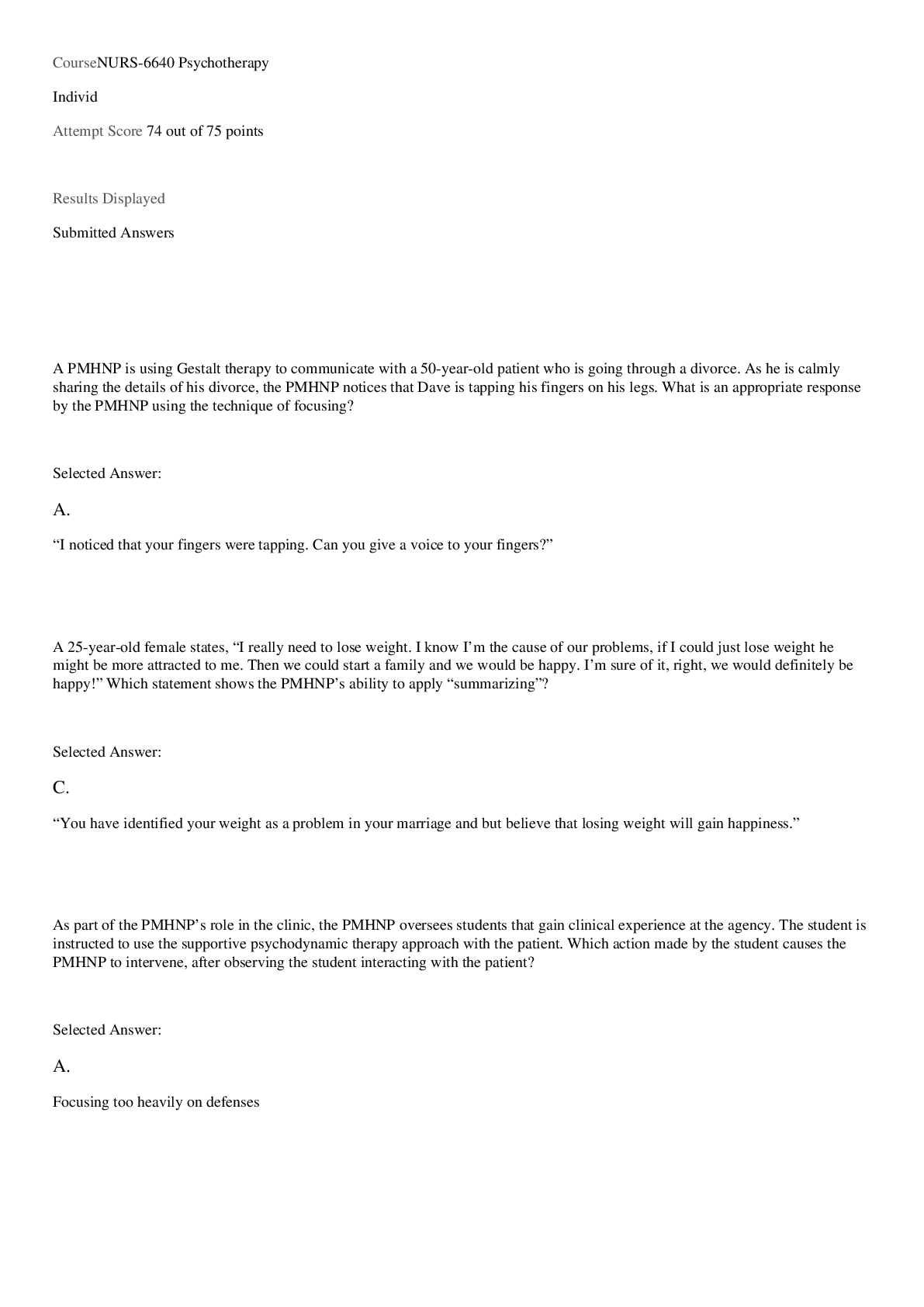Health Care > EXAM > ACLS AHA WRITTEN TEST EXAM 2025/2026 REAL STUDY EXAM QUESTIONS WITH CORRECT ANSWERS 100% GUARANTEED (All)
ACLS AHA WRITTEN TEST EXAM 2025/2026 REAL STUDY EXAM QUESTIONS WITH CORRECT ANSWERS 100% GUARANTEED PASS | RATED A+
Document Content and Description Below
Which condition is a contraindication to theraputic hypothermia during the post-cardiac arrest period for pt's who achieve return of spontaneous circulation (ROSC)? - Answer>>> Responding to verbal co... mmands A responder is caring for a patient with a history of CHF. The patient is experiencing SOB, BP of 68/50 mm Hg, and a HR of 190/min. The patient's lead II ECG is displayed above. Which of the following terms best describes this patient? - Answer>>> Unstable supraventricular tachycardia The Approach to Unstable Tachycardia Symptoms and Signs A 56-year-old man reports that he has palpitations but not chest pain or difficulty breathing. The blood pressure is 132/68 mm Hg, the pulse is 130/min and regular, the respiratory rate is 12 breaths/min, and the pulse oximetry reading is 95%. The lead II ECG displays a wide-complex tachycardia. What is the next action after establishing an IV and obtaining a 12-lead ECG? - Answer>>> Seeking expert consultation. Application of the Tachycardia Algorithm to the Stable Patient: Wide (Broad)-Complex Tachycardias Emergency medical responders are unable to obtain a peripheral IV for a patient in cardiac arrest. What is the next most preferred route for drug administration? - Answer>>> Intraosseous (IO) Routes of Access for Drugs After verifying unresponsiveness and abnormal breathing, you activate the emergency response team. What is your next action? - Answer>>> Check for a pulse. The BLS Survey During your assessment, your pt suddenly loses consciousness. After calling for help and determining that the pt. is not breathing, you are unsure whether the pt. has a pulse. What is your next action? - Answer>>> Begin chest compressions. 3 min after witnessing a cardiac arrest, one memeber of your team inserts an ET tube while another performs continuous chest comressions. During subsequent bentilation, you notice the presence of a wavefom on the capnogrophy screen and a PETCO2 of 8 mm Hg. What is the significance of this finding? - Answer>>> Chest compressions may not be effective. What is the recommended assisted ventilation rate for patients in respiratory arrest with a perfusing rhythm? - Answer>>> 10 to 12 breaths per minute Ventilation Rates What is an advantage of using hands-free d-fib pads instead of d-fib paddles? - Answer>>> Hands-free allows for more rapid d-fib. What action is recommended to help minimize interruptions in chest compressions during CPR? - Answer>>> Continue CPR while charging the defibrillator. Foundational Facts: Resume CPR While Manual Defibrillator is Charging Which action is included in the BLS survey? - Answer>>> Early defibrillation Which drug and dose are recommended for the management of a pt. in refractory V-FIB? - Answer>>> Amiodarone 300mg [Show More]
Last updated: 6 days ago
Preview 4 out of 12 pages

Loading document previews ...
Buy this document to get the full access instantly
Instant Download Access after purchase
Buy NowInstant download
We Accept:

Reviews( 0 )
$12.00
Can't find what you want? Try our AI powered Search
Document information
Connected school, study & course
About the document
Uploaded On
Jul 25, 2025
Number of pages
12
Written in
Additional information
This document has been written for:
Uploaded
Jul 25, 2025
Downloads
0
Views
6


